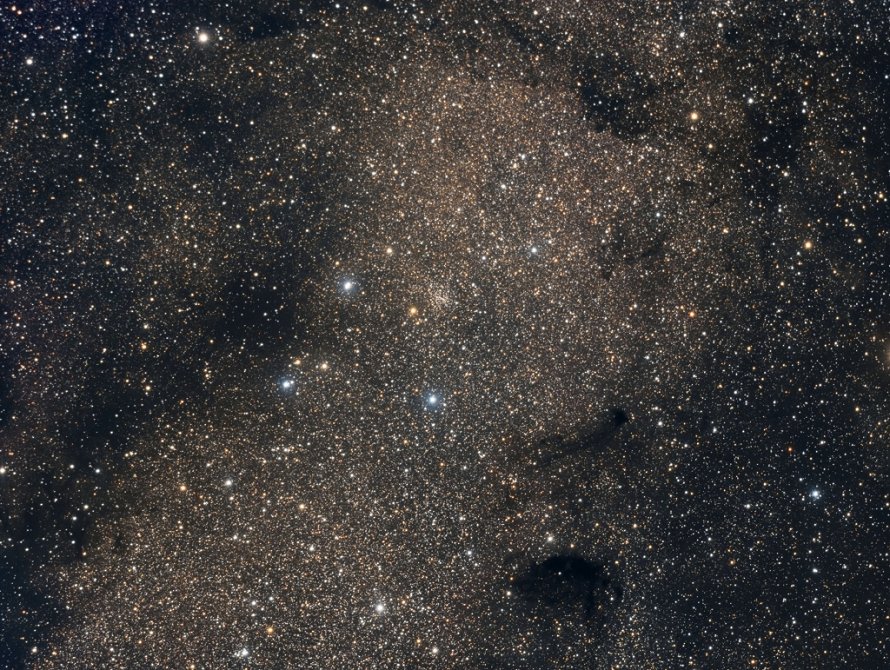M24 (IC 4715) - Small Sagittarius Star Cloud
Messier 24 (IC 4715), also known as the Small Sagittarius Star Cloud, is a cloud located in the constellation Sagittarius, in the Sagittarius Arm of the Milky Way Galaxy in the Local Group of galaxies. M24 is 10000 light years away from Earth.
M24 is best viewed during late summer, is magnitude 2.5, and can be viewed with naked eye. M24 is 2° x 1° in apparent size. For reference, the full moon is 30'.
Observing difficulty: Easy
- Name:
- Small Sagittarius Star Cloud
- Type:
- cloud
- Constellation:
- Sagittarius
- NGC or IC:
- IC 4715
- Magnitude:
- 2.5
- Viewing:
- naked eye
- Size:
- 2° x 1°
- Distance (light years):
- 10000 LY
- RA:
- 18h 17m
- Dec:
- -18 29'
- Season:
- late summer
- Milky Way location:
- Sagittarius Arm
- Galaxy group:
- Local Group
- Messier Marathon #:
- 93
* The naked eye can see up to magnitude ~7-8 objects under ideal dark sky conditions.
An Enthralling Window into the Milky Way
In the pantheon of Messier objects, Messier 24 (M24) occupies a special place. Unlike other entries in the catalog, M24 isn't a star cluster, nebula, or galaxy. Rather, it's an exceptionally dense star cloud in the Milky Way galaxy - a "window" offering a spectacular view into our home galaxy's crowded disk. This article delves into M24's unique nature, its visual magnitude, and how amateur astronomers can locate and observe this intriguing celestial feature.
Discovery and Observation
French astronomer Charles Messier cataloged M24 on June 20, 1764. Located approximately 10,000 to 16,000 light-years away, M24 offers an outstanding view of the rich star fields of the Sagittarius Arm of the Milky Way galaxy.
Physical Characteristics and Magnitude
M24 is an area of sky about 600 light-years across, appearing to us as a dense star field against the obscuring dust and gas of the Milky Way's disk. It contains an estimated one million stars and several open clusters, the most notable being NGC 6603. Despite its distance, M24's apparent magnitude of 4.6 makes it visible to the naked eye under dark skies as a detached segment of the Milky Way, while binoculars or a telescope can reveal many of its individual stars.
Astronomical Significance
M24's uniqueness lies in the fact that it's a star cloud, essentially a clearer view into our galaxy's plane, unobscured by the interstellar dust that usually masks this view. Observing M24 offers astronomers and enthusiasts a glimpse into the rich, star-packed disk of the Milky Way. This makes M24 an excellent tool for studying our galaxy's structure and stellar composition.
Finding and Viewing M24
Located in the constellation Sagittarius, M24 is best visible in the summer months for Northern Hemisphere observers. It lies within the Milky Way band, which is why it's surrounded by numerous other interesting objects. With the naked eye or binoculars, M24 appears as a bright, nebulous patch against the starry background. Telescopic observers will appreciate the rich star fields and the myriad of colors from the various stars and clusters embedded within M24.



